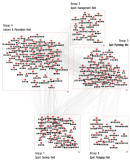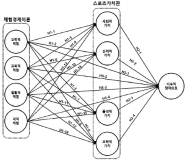Purpose The purpose of this study is to deeply understand what high school student athletes are doing as athletes and how they are transformed into student athletes from studying and exercising simultaneously. Through this, to understand the life of student wrestlers and to provide basic data for rational improvement of school athletic department. Methods Participants of the study selected one student in the second grade and two students in the third grade at Woosu high school in metropolitan. Data was collected through in-depth interviews, participant observation, and document analysis. The collected data was analyzed using Domain Analysis and Taxonomic Analysis by Spradley(1979). To assure the credibility of the data, additional checks and analysis were conducted with the participants, and the research process was examined by experts. Moreover, the common contents of the data were included in the research results with multilateral verification. Results Woosu high school wrestling student athletes were recognized as athletes as a training life to lose their dreams, a school life to stop their work. However, since student athletes have been studying and exercising together, they have been transformed from a trainee to a motivated active, a student who is reborn in the school community, and transformed a reflective student athlete to an immature player on a daily life. Conclusion The policy of the school athletic department to study and exercise together has a positive effect on student athletes and has a good effect. The introduction and practice of this system can expect true student athletes and establish elite physical education right away.

To examine the flow of knowledge structure in Korean journals of sport and social sciences over the last 10 years, this study has derived a knowledge map by conducting community analysis, one of the social network analysis methods, on Korean Journal of Sports Industry Management, Korean Journal of Sport Pedagogics, Korean Journal of Sport Sociology, Korean Journal of Sport Psychology and Korean Journal of Leisure and Recreation. According to the analysis result, the integrated knowledge map for the field of sport and social sciences was classified into 5 groups and these groups were derived to be similar to the knowledge structure of the keyword groups for the research topics of the five journals targeted by this study. Along with this result, at the same time, it has been confirmed that most of the groups shared keywords with each other. Especially, some of the keywords for the research topics of sports industry management have transferred to the research topics of leisure and recreation and those of sport sociology. Sport sociology has been revealed to be closely related to sports industry management and sport psychology. In the case of sport psychology, it has been confirmed that it is related to most of the other groups and the psychological variables for understanding human behavior can be widely used. It shows that leisure and recreation is highly related to sport psychology and sport management in terms of keywords for research topics but it is suggested that it also needs its own independent research topics. Sport pedagogics, by its nature, is an isolated field but interacts with sport psychology and attempts can be made to expand its research topics through an approach based on the concept of pedagogy for physical education.

The purpose of this study is to investigate the further direction of molecular biological studies, the advantages and limitations of assaying samples, and variables in figuring out the details of domestic and overseas studies verified through cell and molecular biological analysis in order to analyze the effect of concurrent training. The analysis study was limited to domestic and overseas literature, which investigated the effect of combined training using molecular biological analysis among studies to date. The study was reclassified by specialty, composed of professors of physical education and doctors of exercise physiology. The final selected study analyzed the subject and the trend of studies in terms of comprehensive perspectives. In detail, it analyzed hormonal and enzymatic changes in criteria such as leptin, 5-HT, ACTH(adrenocorticotropic hormone), cortisol, testosterone, GH(growth hormone), LDH(lactate dehydrogenase), CPK(creatine phosphokinase), antioxidants in blood samples and protein, and enzymatic and morphologic changes in for CRP, VEGF(vascular endothelial growth factor), PAI-1(plasminogen activator inhibitor-1), MAD(malondialdehyde), carnosin, and SDH(succinate dehydrogenase), the area of muscle fibers, ratio of type Ⅰ/Ⅱ muscle fiber and capillary proportion per muscle fiber in the extracted muscle by biopsy, for example. Finally, urine samples, and hormonal changes (like cortisol), were analyzed. The results of the analysis of domestic and overseas studies according to combined training has shown that this training has more varied effects than single training and lower improvement by interference effect or magnifying the effect of one type of training amongst the combined training types appears, rather than higher improvement through combined trainings. Therefore, it should be investigated in view of performance improvements relating to the characteristic of sports.

Purpose The purpose of this study was to examine the structural relationship between the sport values and continuous participation intention of the dance for all participants based on the 4 experience economy theory. Methods Frequency analysis, correlation analysis, confirmatory factor analysis and structural equation modeling using SPSS 21.0 and AMOS 18.0 were conducted to analyze the survey materials. Results First, the entertainment experience was a significant effect on all factors of sports value. Second, educational experience was a significant effect on all factors except sports entertainment value. Third, escapist experiences have a significant effect on all factors except physical value. Fourth, aesthetic experience has a significant effect on all factors of sports value. Fifth, social value and entertainment value was a significant influence on the continuous participation intention. Sixth, entertainment experience and aesthetic experience was a significant influence on the continuous participation intention. Conclusions Through these study results, it was confirmed that 4 experience, sport values and continuous participation intention of dance for all participants had a significant influence on each other.
